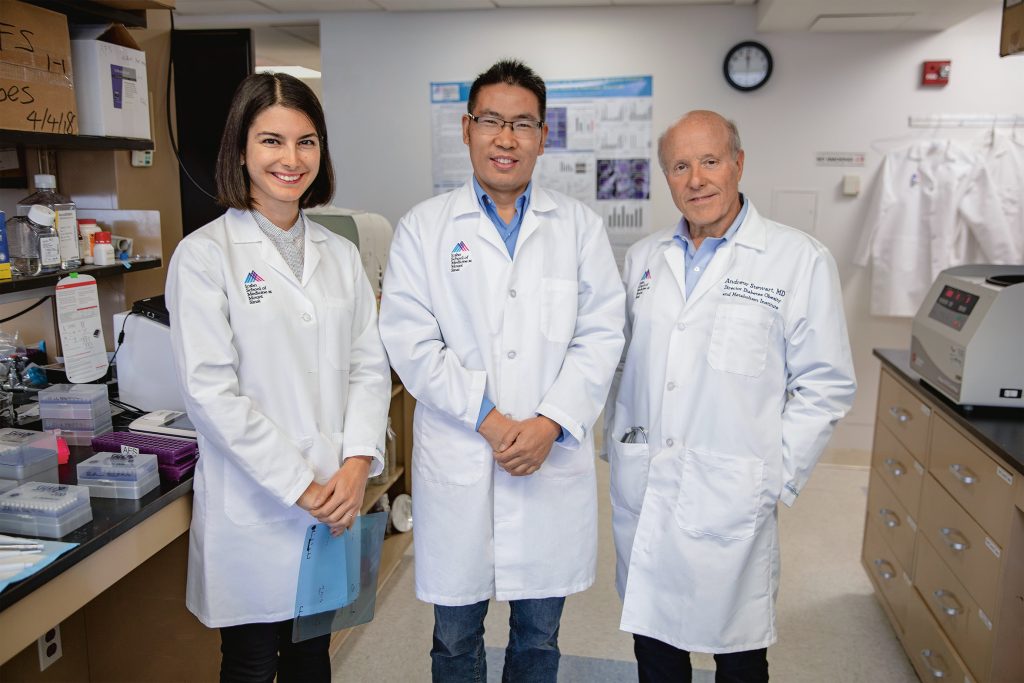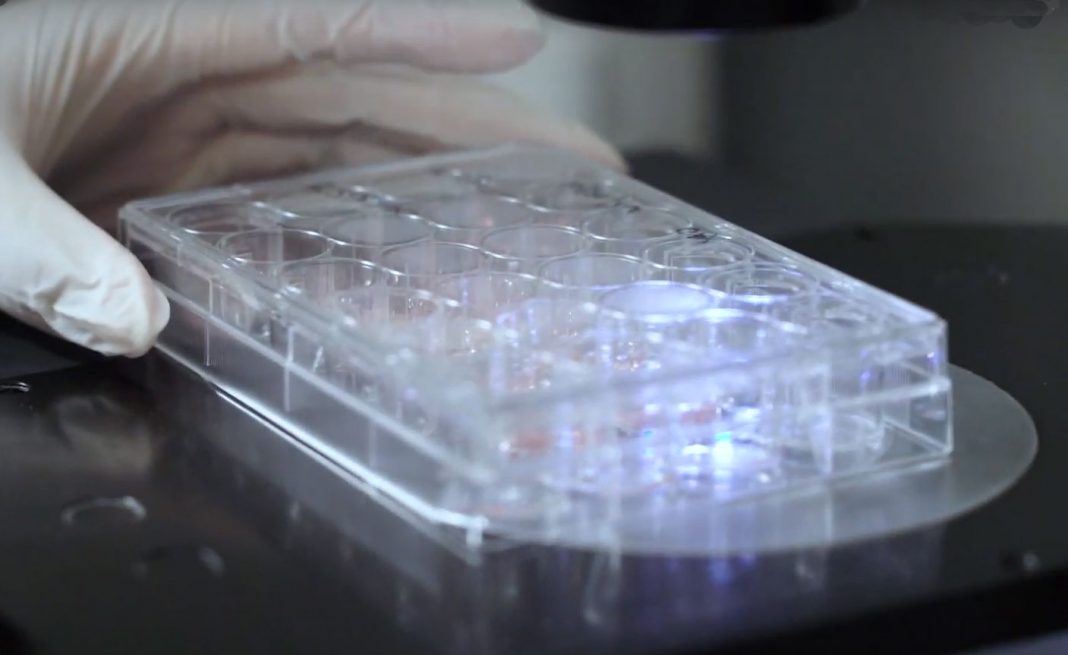Scientists at the Icahn School of Medicine at Mount Sinai along with collaborators from other institutions say they have discovered a novel combination of two classes of drugs that, together, cause the highest rate of proliferation ever observed in adult human β cells without harming most other cells in the body. The result is an important step toward a diabetes treatment that restores the body’s ability to produce insulin, according to the team.
The finding involved a DYRK1A inhibitor, which is known to cause β cells to proliferate, and a GLP1R agonist, already in widespread use in people with diabetes. Together, they caused the cells to proliferate at a rate of 5–6% per day. The team’s research (“GLP-1 receptor agonists synergize with DYRK1A inhibitors to potentiate functional human beta cell regeneration”) appears in Science Translational Medicine online.
“Glucagon-like peptide-1 receptor (GLP1R) agonists and dipeptidyl peptidase 4 inhibitors are widely prescribed diabetes drugs due to their ability to stimulate insulin secretion from remaining β cells and to reduce caloric intake. Unfortunately, they fail to increase human β cell proliferation. Small-molecule inhibitors of dual-specificity tyrosine-regulated kinase 1A (DYRK1A) are able to induce adult human β cell proliferation, but rates are modest (~2%), and their specificity to β cells is limited,” write the investigators.
“Here, we provide evidence that combining any member of the GLP1R agonist class with any member of the DYRK1A inhibitor class induces a synergistic increase in human β cell replication (5 to 6%) accompanied by an actual increase in numbers of human β cells. GLP1R agonist–DYRK1A inhibitor synergy required combined inhibition of DYRK1A and an increase in cAMP and did not lead to β cell dedifferentiation. These beneficial effects on proliferation were seen in both normal human β cells and β cells derived from individuals with type 2 diabetes. The ability of the GLP1R agonist–DYRK1A inhibitor combination to enhance human β cell proliferation, human insulin secretion, and blood glucose control extended in vivo to studies of human islets transplanted into euglycemic and streptozotocin-diabetic immunodeficient mice. No adverse events were observed in the mouse studies during a 1-week period. Because of the relative β cell specificity of GLP1R agonists, the combination provides an improved, although not complete, degree of human β cell specificity.”
“We are very excited about this new drug combination because for the first time ever, we are able to see rates of human β cell replication that are sufficient to replenish β cell mass in humans with diabetes,” said Andrew Stewart, MD, director of the Mount Sinai Diabetes, Obesity, and Metabolism Institute and lead author of the study.
Diabetes occurs when there are not enough β cells in the pancreas, or when those β cells secrete too little insulin, the hormone required to keep blood sugar levels in the normal range. Approximately 30 million people in the U.S. have diabetes and nearly 50 to 80 million more are living with prediabetes, called metabolic syndrome). Diabetes can lead to major medical complications, including heart attack, stroke, kidney failure, blindness, and limb amputation.
In type 1 diabetes, the immune system mistakenly attacks and destroys β cells. A deficiency of functioning β cells is also an important contributor to type 2 diabetes, the most common type of diabetes. Thus, developing drugs that can increase the number of healthy β cells is a major priority in diabetes research. According to Stewart, none of the diabetes drugs currently on the market can induce β cell regeneration in people with diabetes. In parallel with the Mount Sinai work, other researchers are studying pancreatic transplantation, β cell transplantation, and stem cell replacement of β cells for people with diabetes, but none of these approaches is in widespread use.
“This is a very exciting discovery in the field of diabetes and is a key next step in drug development for this disease,” said Dennis S. Charney, MD, Anne and Joel Ehrenkranz Dean of the Icahn School of Medicine at Mount Sinai. “This important work truly holds promise for so many people.”
In 2015, Stewart and his colleagues published a paper (“A high-throughput chemical screen reveals that harmine-mediated inhibition of DYRK1A increases human pancreatic beta cell replication”) in Nature Medicine that showed that harmine, a drug that inhibits the enzyme dual specificity tyrosine-regulated kinase 1A (DYRK1A), induced multiplication of adult human β cells. In that study, his team also discovered that harmine treatment led to normal control of blood sugar and proliferation in human β cells in diabetic mice whose β cells had been replaced with small numbers of transplanted human β cells. While this was a major advance, the proliferation rate was lower than needed to rapidly expand β cells in people with diabetes.

The current paper builds upon a study (“Combined Inhibition of DYRK1A, SMAD, and Trithorax Pathways Synergizes to Induce Robust Replication in Adult Human Beta Cells”) that Stewart and his team published in Cell Metabolism in December 2018, where they discovered that DYRK1A inhibitors combined with another drug that inhibits transforming growth factor beta superfamily members (TGFβSF), also known as a family of proteins with various biological processes such as growth, development, tissue homeostasis and immune system, could cause β cells to proliferate at a rate of 5 to 8 percent per day. However, according to Stewart, TGFβSFs would likely have side effects on other organs in the body that would prevent clinical use. The next challenge was developing ways to target regenerative drugs to the β cells while avoiding other cells and organs in the body where they may elicit adverse effects.
In the present study DYRK1A inhibitors like harmine were combined with a class of β cell-targeting drugs, also known as GLP1R agonists, which are already in widespread use in people with type 2 diabetes. They showed—in β cells from normal people and people with type 2 diabetes, both in the tissue culture dishes and in human β cells transplanted into mice—that combining harmine (or any other DYRK1A inhibitor) with any of the many GLP1R agonist drugs currently on the market for diabetes yields high rates of human β cell replication, and does so in a way that is highly selective for the β cell.
The project arose from the doctoral thesis of an Icahn School of Medicine graduate student, Courtney Ackeifi, PhD, now a postdoctoral fellow in Stewart’s lab and first author of the paper, who explored a broad spectrum of potential drug partners that could enhance the β cell regenerative efficacy and selectivity of harmine.
“The beauty here is that the combination of DYRK1A inhibitors with GLP1R agonists achieves the highest rate of human β cell replication possible, and does so in a highly specific way,” says Ackeifi. “This is an important advance in the field of diabetes because we may have found a way to convert a widely used class of diabetes drugs into a potent human β cell regenerative treatment for all forms of diabetes.”
“We know that a critical pathway to drive a cure for type 1 diabetes includes transplanting insulin-producing β cells into people or enticing their existing β cells to start multiplying,” explains Francis Martin, PhD, director of research at the Juvenile Diabetes Research Foundation (JDRF). “It is exciting to learn from the work of Stewart and his team that GLP1R agonists could increase the effect of the recently discovered agents that promote multiplication. Using GLP1R offers a means to boost the effect while also improving the safety of this type of drug.”
The next goals of the project are to perform long-term studies in animals transplanted with human β cells, and to determine if any cells or organs in the body other than β cells are affected by the new drug combination, according to Stewart.


